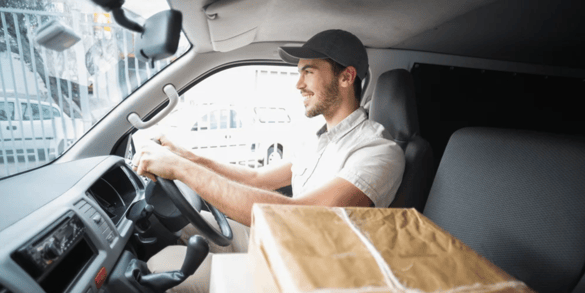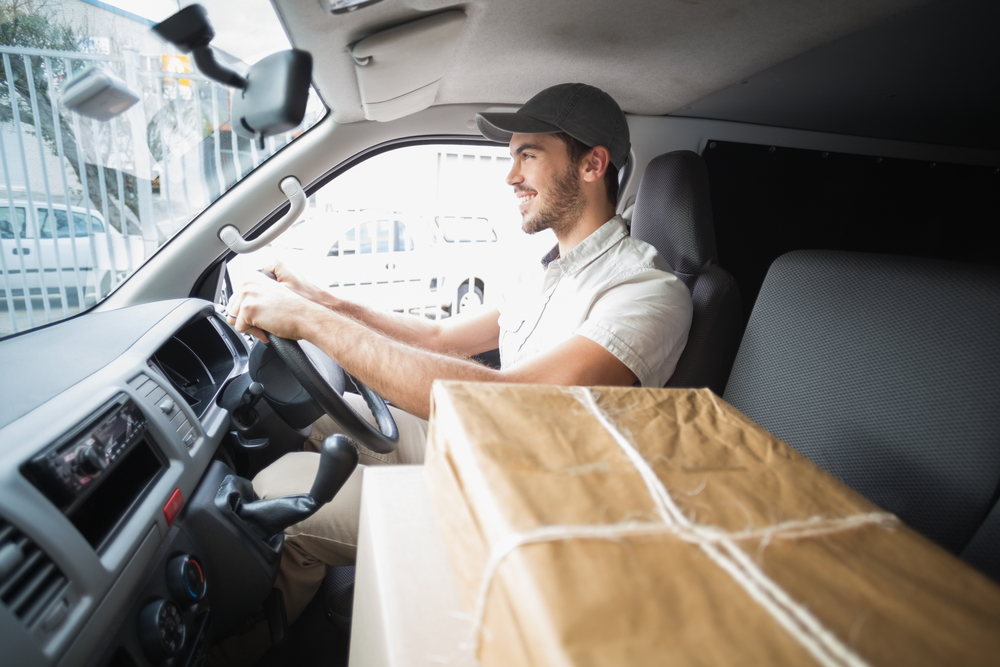Find out more courier industry leader tips for measuring productivity at a Virtual Lunch & Learn on May 11, 2022 at 12:00 noon (CDT). Register here: https://meetings.zello.com/eca/lunchlearn

The Courier Express and Parcel (CEP) market has experienced explosive growth in the past decade. In the US alone, couriers and messengers generated 139 billion in revenue in 2021. But while demand is increasing, it’s harder than ever to retain couriers.
Added to the daily demands of the job are exceptions that arise daily: wrong address, blocked entrance, flat tire. It’s how quickly couriers can work with their dispatchers to manage these exceptions that can make or break a business.
Reducing the friction couriers encounter in communicating with dispatch helps them keep deliveries on time despite any obstacles, and also increases the likelihood that drivers will stay on the job.
How Digital Push-to-Talk Technology Helps Couriers Manage Exceptions
Many companies are turning to digital push-to-talk technology to meet growing market demand while also providing drivers with easier ways to manage exceptions that arise. Let’s take a look at why digital push-to-talk is a key differentiator:
Improved sound quality leads to less frustration.
When companies use traditional walkie-talkie radio for dispatch-courier communications, dispatchers frequently drop inbound calls due to poor radio signal or drivers heading entirely out of range.
Oftentimes, when a connection is made, sound quality is full of static and dispatch may have trouble hearing or responding to a courier’s query.
Because digital push-to-talk works on Wi-Fi or cellular signal, drivers and dispatchers can reliably connect from virtually anywhere in the world with crystal clear sound every time.
Superior sound quality with digital push-to-talk means that dispatch and drivers can spend their time quickly solving exceptions instead of troubleshooting a poor connection.
Faster connections mean quicker problem solving.
Push-to-talk technology is FMCSA compliant, so there’s no need for couriers to pull off the road while trying to reach dispatch for help managing an exception, such as an unclear delivery address or confusing drop-off instructions.
Instead, a driver merely taps a button on their mobile device and instantly connects. The technology allows dispatchers to toggle between incoming driver calls, servicing multiple drivers simultaneously.
Bonded Transportation Solutions is a company that provides same-day deliveries in the US Midwest. It recently introduced digital push-to-talk technology in the hope of speeding up communications between drivers and dispatchers.
Since rolling out the new communication platform, calls into dispatch have decreased by 25-30%. The reason? The connection is clear and quick, so dispatchers are more likely to solve driver problems on first contact.
For example, an elderly driver may not feel comfortable taking on a particular assignment due to the heavy lifting involved. Rather than try and try again to reconnect with dispatch, the courier can instantly tap a button on their mobile device, connect to dispatch, and quickly get a more suitable assignment.
As a result of being able to help couriers manage exceptions much faster, dispatchers at Bonded Transportation Solutions now have more time to take calls from customers.
State-of-the-art technology helps increase retention.
Anyone who runs a courier business knows that retaining talent is incredibly difficult. Drivers make money based on the number of completed deliveries. If companies are not able to ensure a full schedule for their independent contractors, they risk losing them to other courier companies.
Job hopping within the industry for better benefits, higher pay, and fewer frustrations has become common. By providing deskless workers with state-of-the-art technology, company leaders show they value their couriers and want them to benefit from cutting-edge communication technologies that the executives use to manage exceptions.
Crossroads Courier is a company that provides same-day deliveries throughout North America and beyond. Since 2002, the company has made over 13 million deliveries with 3.3 million of them being time critical medical specimens.
Vice President, Elizabeth Klein, from Crossroads Courier says that by rolling out digital push-to-talk technology, she immediately saw that quicker dispatch response times led to better driver retention.
Klein says that the push-to-talk communications platform has “improved how we are able to service our drivers and clients and take care of our staff.” Without the technology, Crossroad Courier would have a harder time managing exceptions and keeping her internal customers happy.
How Push-to-Talk Helps Couriers Deliver Great Results
In the courier business, dispatchers need to manage exceptions every single day.
Whether a courier runs into a closed road, an incomplete delivery address, a locked gate, a vehicle problem or any other unanticipated problems that might arise, an excellent communications platform is key to quickly managing exceptions.
Increasingly, courier companies are introducing push-to-talk digital communications platforms, in order to reduce friction in communications, save on support personnel, and improve customer service.
Zello is a voice-first communication platform that offers all the benefits of digital push-to-talk.
It also has multimedia features, including the ability to take and send photos, so couriers can photograph every delivery and send the picture to dispatch in seconds. This creates a timestamped record to help dispatch provide a record in the case of any customer dispute. This is just one more way that Zello helps couriers excel at their jobs.
Find out more courier industry leader tips for measuring productivity at a Virtual Lunch & Learn on May 11, 2022 at 12:00 noon (CDT). Register here: https://meetings.zello.com/eca/lunchlearn

